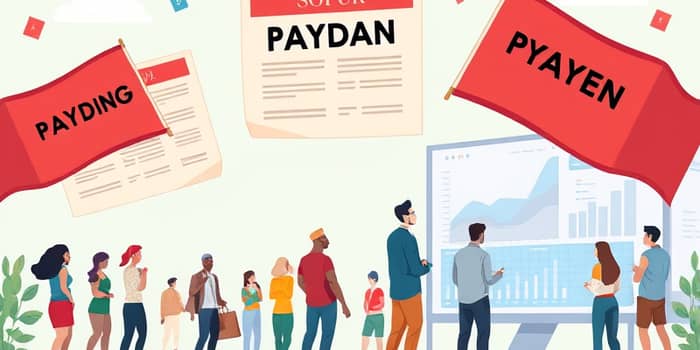
The prevalence of payday loans in communities across the United States and beyond has emerged as a critical indicator of deep-seated financial strain. By viewing sustained payday loan use as a risk marker, policymakers, financial institutions, and community advocates can identify vulnerable populations and implement targeted interventions. This article explores the patterns, implications, and practical strategies for harnessing payday loan activity as an early warning signal of chronic distress.
Payday lending often markets itself as a quick solution to short-term cash needs. Yet, the true cost of these services is staggering. In the 30 states permitting storefront payday loans, borrowers paid over $2.4 billion in fees in one year, while taking out more than 20 million loans totaling $8.6 billion in volume. With average annual percentage rates approaching 400%, many individuals find themselves trapped in a cycle of debt.
Research shows that payday loan use is disproportionately high among underbanked and low-income individuals, recent immigrants, and minority groups. Young adults facing student loan debts, as well as divorced or separated parents, also rely heavily on these high-cost advances. These demographic trends underscore how payday loan activity reflects broader social and economic inequities.
Not all payday loan users are immediately in crisis. However, certain behaviors serve as clear risk markers. A borrower who takes out a new loan on the same day a previous loan is due or one who rolls over multiple times exhibits patterns of chronic financial instability. Empirical studies have linked these practices to higher default rates, persistent overdrafts, and long-term credit damage.
Increasingly, online payday lending accounts for a significant share of volume—about 41% by 2019—complicating efforts to track state-level trends. Yet, wherever these loans are issued, the same red flags appear: repeated borrowing, escalating fees, and minimal net gain in household liquidity.
States have adopted a range of approaches to mitigate payday lending risks. Eighteen states and Washington, D.C., have effectively banned traditional payday loans by capping APRs at 36%, while others permit storefront lending under strict conditions. Federal regulators, including the Consumer Financial Protection Bureau (CFPB) and the FDIC, have issued guidance to limit rollovers, enforce cooling-off periods, and monitor lenders’ community reinvestment compliance.
Financial institutions are now encouraged to include payday loan indicators in credit risk models. By assigning weight to recent payday loan activity—particularly multiple loans in short spans—banks can better identify customers at risk of default and take proactive steps, such as offering alternative credit products or financial counseling.
Developing a robust monitoring framework involves integrating payday loan data with existing credit reports. Key components of an effective system include:
Institutions should train compliance teams to interpret these risk markers and design tailored interventions. For instance, when a customer’s payday loan frequency exceeds a preset limit, a prompt might trigger an outreach offer for counseling or a small installment loan at a lower APR.
While monitoring is crucial, it must be paired with solutions that address the root causes of financial distress. Community development financial institutions (CDFIs) and credit unions have piloted small-dollar installment loans capped at 36% APR, reducing borrowing costs by up to 75%. Employers can offer payroll-based advances, and local nonprofits can provide financial education workshops.
By presenting borrowers with transparent, lower-cost alternatives, stakeholders can reduce dependence on payday loans. Collaboration between lenders, regulators, and community organizations is essential to scale these offerings and ensure that those flagged by risk systems receive timely support.
Evidence-based policy interventions can strengthen the protective framework around payday loan risk markers:
These measures can transform payday loan activity from a symptom of distress into a proactive tool for risk management and consumer protection. By codifying monitoring practices into law, lawmakers can ensure consistent application across states and lending channels.
Monitoring payday loan activity as a risk marker offers a transformative pathway to protect financially vulnerable individuals and strengthen community resilience. Proactive risk management—backed by regulatory frameworks, innovative lending models, and robust community support—can break the cycle of predatory lending. By embracing these strategies, stakeholders can shift from reactive measures to preventative solutions, ensuring that the warning signs embedded in payday loan patterns become catalysts for meaningful change.
References













